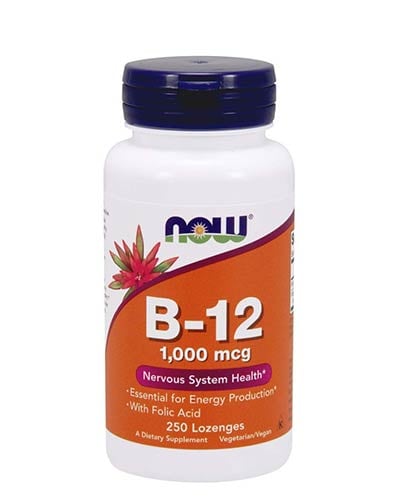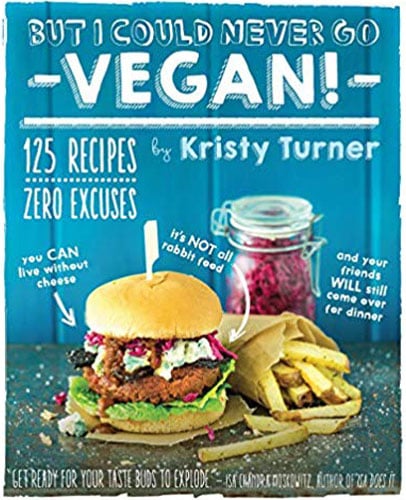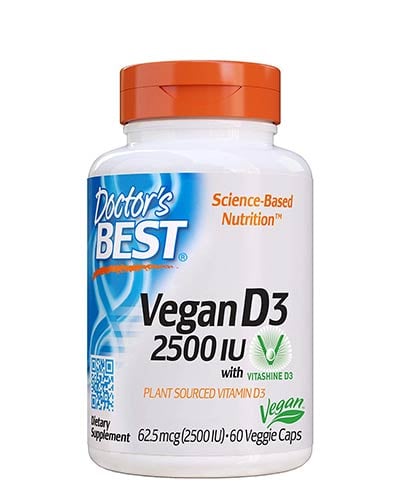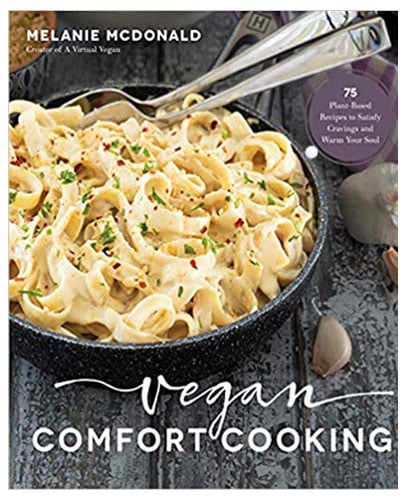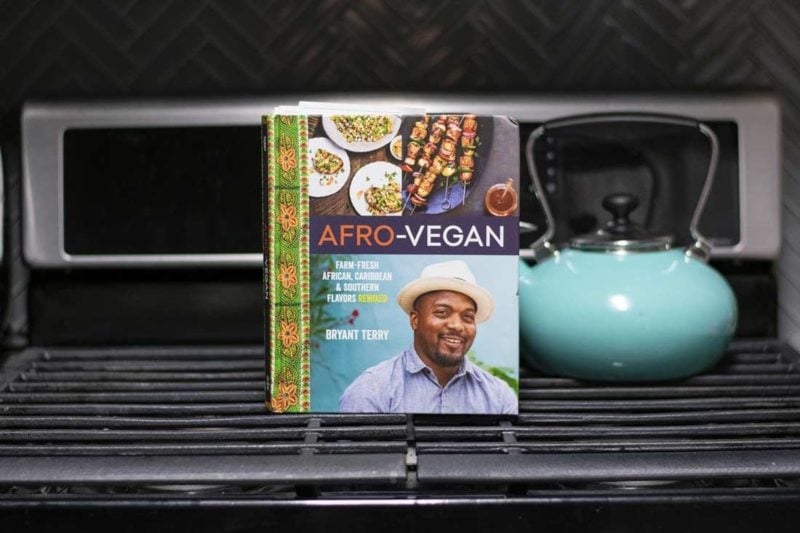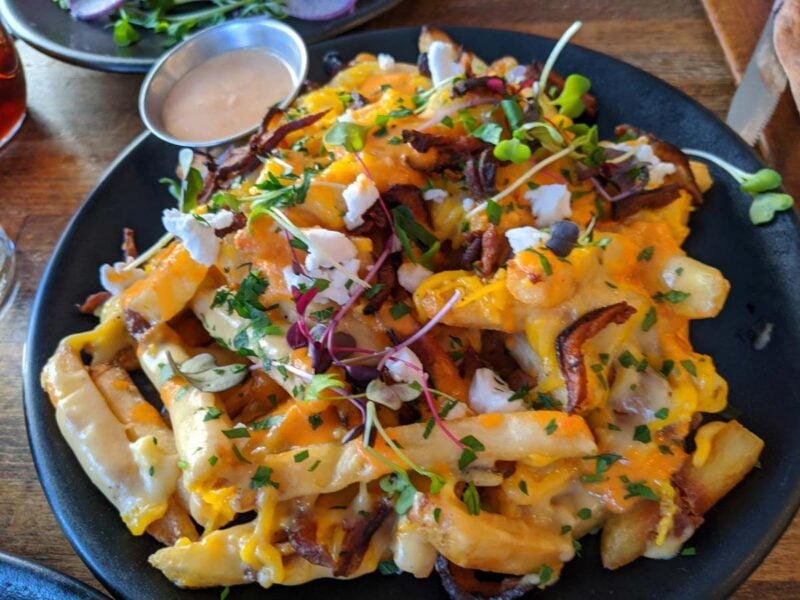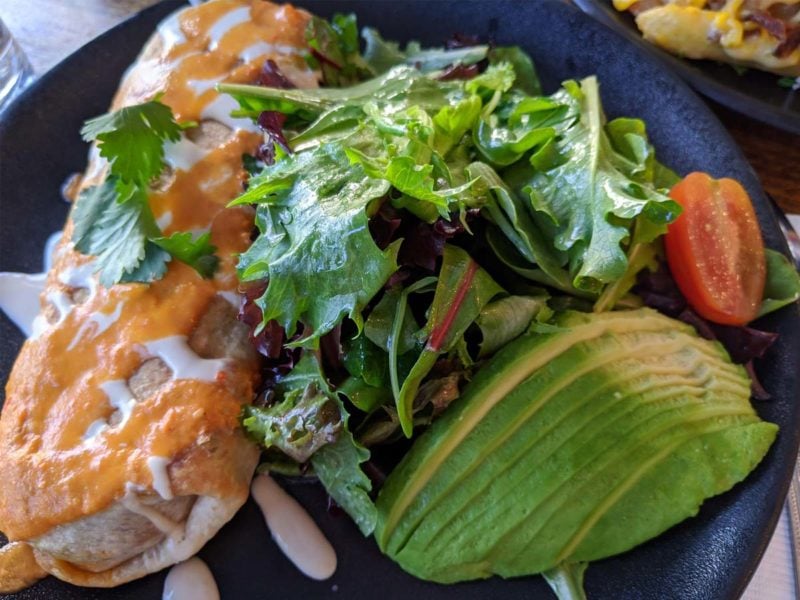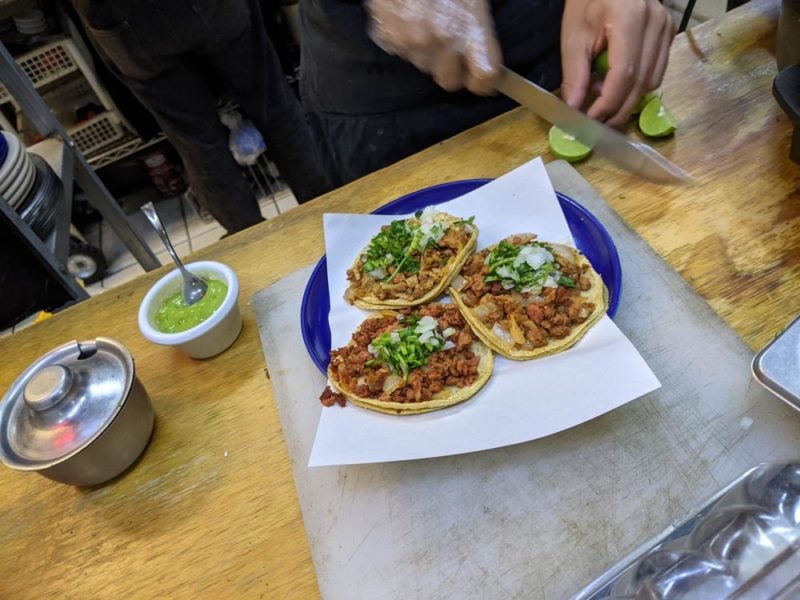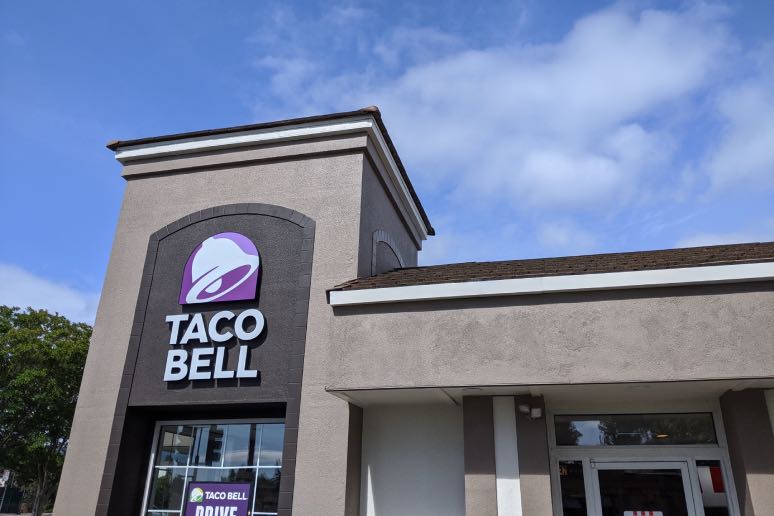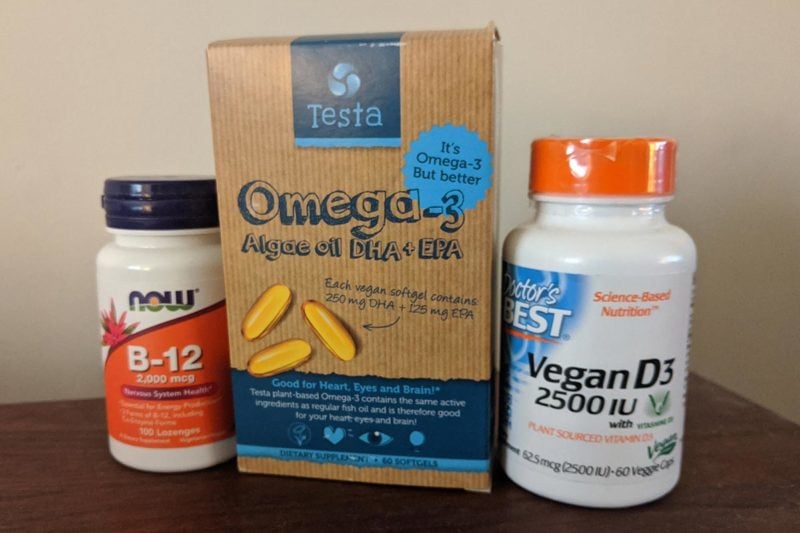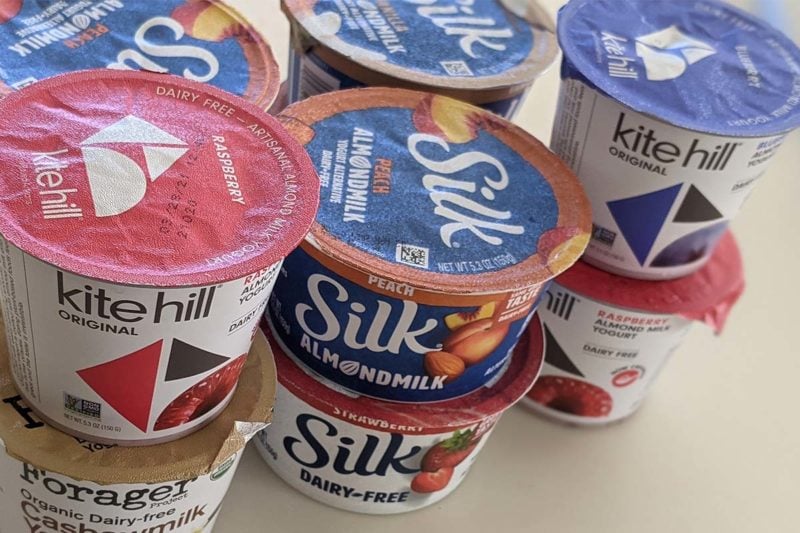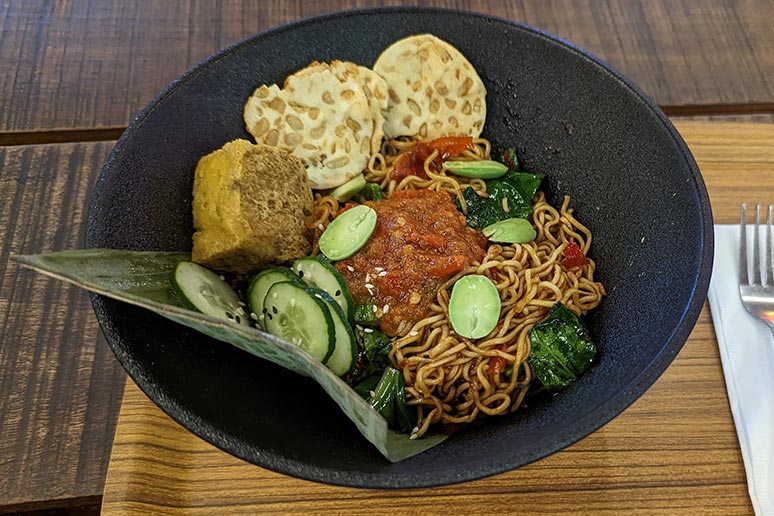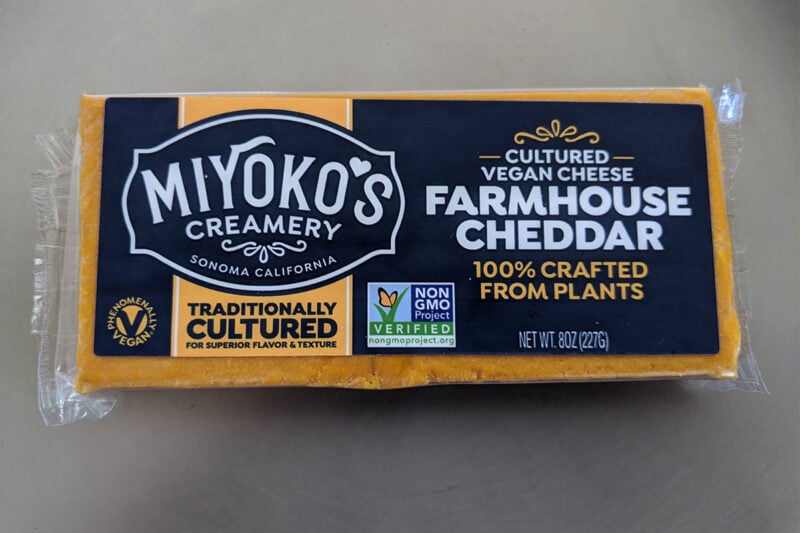Try being vegan for just a little while, and there’s a good chance you’ll never go back. Just follow the advice I’ll offer here, and you’ll undoubtedly find the experience easy and satisfying.
Set whatever length of time best suits you—a day, a week, a month, or a year. For many people, just one week is a perfect no-pressure starting point. Do it for a week you may see no reason to stop. After just a month, you could well decide to stick with it for life.
What’s more, sticking to a vegan diet becomes easier with every passing week. For most people, it’s smooth sailing after their first week. In fact, by the time you make it to the three week mark, you will likely find that the lifestyle has become second nature and is nearly effortless to continue.
So the point of this guide is to give you all the hand-holding you need to get through your first few weeks. After three weeks you of course still won’t know half the tips and tricks a vegan of ten years will know. But you will nevertheless be well past the tricky part and nicely equipped to continue eating vegan for as long as you wish.
Emphasize Crowding, Not Cutting
So let’s start first with the most important piece of advice I can possibly offer: going vegan is not about cutting meat, milk, and eggs out of your diet—it’s about crowding them out. Cutting out animal-based foods may provoe feelings of sacrifice and deprivation. But when you crowd out these foods there’s no feeling of sacrifice at all. That’s because you’re abandoning old foods in favor of new ones that taste better and are more satisfying. And every time you discover a new vegan food that you adore, the animal-based foods you grew up eating get pushed further to the margins.
When it comes to successfully transitioning to a vegan diet, the name of the game is to constantly sample new foods. You of course won’t love—or even like—everything you try. But every time you find something you enjoy, it’ll displace some of the non-vegan foods you’re currently accustomed to eating. Trying as many new foods as possible means learning about all the vegan options that exist, both at groceries and at restaurants. And if you can get a few simple cooking skills under your belt while you’re at it, your meal options will expand beyond belief.

Shopping for Vegan Food
Going vegan will probably inspire you to do your grocery shopping in more places, since the best vegan food products are rarely found in typical supermarkets. That said, every supermarket sells basic vegan staples like beans, rice, pasta, tomato sauce, and soy milk.
Unfortunately, supermarkets typically sell the healthier organic versions of these products at full list price. This often makes them more expensive than many natural food stores when it comes to the foods of greatest interest to vegans. Supermarkets usually have good produce sections, although you can usually find better and fresher produce elsewhere.
All that said, supermarkets are certainly more accommodating to vegans than they once were. Many supermarkets today carry an array of vegan meats and dairy-free cheeses. Many also have a natural foods aisle, or even an entire section of the store devoted to healthier foods.
Natural Foods Stores
A good natural food store generally beats a supermarket in every important respect. Just keep in mind that some purportedly “natural food stores” are really just vitamin shops, with exorbitant prices on the paltry selection of foods they sell. You can typically identify these stores in an instant because they’ll lack a produce section, and will have more aisles devoted to pills than to food.
But the best natural food stores are vegan heaven. They’ll carry all sorts of terrific vegan goodies that offer familiar flavors such as ice cream, mayo, frozen pizza, and veggieburgers. Better natural food stores offer outstanding bulk sections. There, you will find everything from nuts to dried beans to granola to coffee. You can save a fortune buying these items in bulk.
The produce section will generally offer higher quality fruits and vegetables than what a supermarket sells—often with a serious effort to source locally grown organic foods.
Most natural foods stores also have a large deli featuring plenty of vegan items. These delis are great for new vegans because they’ll let you discover a wealth of new foods. Any item you like can often be quickly made at home, at minimal cost.
Farmers’ Markets and CSAs
Don’t forget farmers’ markets. There’s no way to get fresher produce, short of growing it yourself. On top of that, nearly 100 percent of your food dollar spent at a farmers’ market supports agriculture in your community. There’s probably at least one farmers’ market near you. The USDA maintains an extensive directory of these markets, and there’s another excellent directory maintained by LocalHarvest.org.
One variant of farmers’ markets involves subscribing to a Community Supported Agriculture (CSA) box. Under this system, you’ll pay a fixed fee every week for a box containing a share of what your farmer grows. The farmer gets guaranteed income for the growing season and you get a steady supply of fruits and vegetables straight from the farm.
And finally, Amazon.com is a ridiculously convenient way to cheaply buy a variety of terrific vegan food items, many of which are unavailable locally. Check our vegan grocery page for a frequently-updated collection of the best vegan foods carried by Amazon.
Vegan Cooking Made Easy
You can speed up your transition to a vegan diet by developing your cooking skills. It takes only an hour or two to acquire basic vegan cooking skills that will benefit you for the rest of your life. Tahini dressing is so easy to prepare, for instance, that there’s really no way to mess it up. Roasted vegetables are scarcely any harder, and you won’t believe how good they taste. And even a stir-fry is an incredibly simple affair.
Stir-Fries, Sandwiches, & Soups
Both roasted vegetables and stir-fries let you constantly try out new combinations. So even if you eat these foods every day, you’re unlikely to get sick of them. And with stir-fries, you can change up the grains you serve them over, as well as the sauces you serve as accompaniments. Peanut sauce is just as easy to make as tahini dressing, and it’ll change your life. Both are superb when poured over stir-fried vegetables.
Next, add in some sandwiches and you’ll start seeing how easy it is to go vegan. Like stir-fries, sandwiches offer remarkable versatility. You can constantly change up the bread, the filling, and the spreads—giving you an unlimited variety of combinations. And if you tire of eating bread, just swap in a whole grain tortilla and turn your sandwich into a wrap. Need more sandwich ideas? Check out the cookbook, Vegan Sandwiches Save the Day!
Soups are right up there with sandwiches in terms of ease of preparation and possible varieties. There are all sorts of stocks you could use, from miso to vegetable to coconut milk. And you can likewise use a different assortment of veggies, spices, and herbs every time. A slow-cooker will give you the ability to start all these soups in minutes, then go away for a few hours with no need to babysit your creation. When you return you’ll have something heavenly. There are several vegan soup cookbooks in print.
Smoothies are Impossibly Easy!
And finally, don’t forget what might be the easiest meal ever: fruit smoothies. All you need is a blender, frozen fruit, and vegan milk (soy, coconut, oat, or almond) and you’re all set. It takes less than two minutes to make a smoothie and less than one minute to clean up. And once again, you can continually vary the ingredients so you can drink a smoothie every day without ever getting tired of them. Maybe it’ll be almond milk and frozen raspberries today, coconut milk and frozen blueberries tomorrow, and soy milk and frozen peaches the day after.
Whatever vegan milk you buy for smoothies, make it unsweetened since the fruits will contribute plenty of sweetness. Also remember that smoothies are a great base for your daily dose of Omega 3s. Just dump a tablespoon of ground flax into your smoothie prior to blending and you’ll be getting essential alpha-linolenic acids.

Keep Things Simple
I call stir-fries, roasted vegetables, soups, salads, smoothies, and sandwiches “core foods” because they take mere minutes to make, and can be prepared in an unlimited number of ways. You can master the preparation of all these foods without purchasing a single cookbook.
That said, if you want to take your cooking skills to the next level, there are hundreds of vegan cookbooks in print. Start with one that’s intended for simple daily cooking, since these are the sorts of recipes you’ll probably make most often. A few especially good choices are:
- Easy Vegan Home Cooking, by Laura Theodore
- Everyday Happy Herbivore, by Lindsay Nixon
- Fast Cheap Easy Vegan, by Sam Turnbull
If you want to get a little fancier, two highly-regarded cookbooks are Vegan Cooking for Two by America’s Test Kitchen and Delicious AF Vegan by Lauren Boehme
Naturally, these titles only scratch the surface of what’s out there. I maintain a page of cookbook recommendations featuring all the best and latest vegan cookbooks.
Eating Out
Once upon a time, vegetarian restaurants were few and far between, and most of those restaurants smothered practically all their food in cheese and eggs. Today most mid-sized towns have at least a few vegan-friendly restaurants. And there are hundreds of all-vegan restaurants around the world. The Veggie Grill and Slutty Vegan chains each have more than ten restaurants in the United States, and Loving Hut has more than thirty.
If there are no vegan restaurants near you, chances are you can still find a great vegan meal at a local restaurant. The easiest way to find vegan-friendly food in your area is to hit Yelp.com and type vegan into the search box. That’ll bring up reviews mentioning the vegan offerings of every restaurant near you.
By far the most vegan-friendly of all cuisines is Middle Eastern, but you’re also likely to find great vegan options at Italian, Ethiopian, Mexican and Indian restaurants. All of these cuisines may include hidden animal ingredients, so be sure to check out the preceding links to learn of the pitfalls and possibilities.
For more advice on how to find the best vegan-friendly restaurants near you, see my guide to dining out.
Vegan Nutrition
Every vegan should read reliable information on nutrition. The best book to read on the topic is Vegan for Life, by Jack Norris RD and Ginny Messina RD, MPH. Ginny has also written the vegan nutrition primer for Vegan.com—an indispensable resource for new vegans.
No matter where you buy most your groceries, keep in mind that most people—vegans and meat-eaters alike—don’t eat nearly enough fruits, vegetables, beans, soyfoods, and whole grains. Go out of your way to regularly eat dark green leafy vegetables, which calorie-for-calorie are perhaps the most nutrient-rich foods available.
If you don’t tend to include enough fruits and vegetables in your diet, here’s a life-changing grocery shopping habit to cultivate: before you approach the cash register, look into your cart and check to ensure that it contains a substantial amount of produce. If you’ve fallen short, then steer your cart back to the produce section and buy some more! After all, it’s impossible to eat enough fruits and vegetables if you don’t buy them in the first place.

Vitamin Supplements
Some people operate under the wrongheaded assumption that, merely by being vegan, they’re exempt from having to think about nutrition. While there’s a grain of truth here, in that vegetables are generally packed with nutrients, it’s still quite possible to develop a deficiency on a vegan diet.
In fact, even if you fill your diet with healthy foods, you can still fall short on key nutrients. It’s extraordinarily important, for instance, that vegans either take a B-12 supplement several times a week, or eat a substantial amount of B-12 fortified foods. And there are numerous other ways to trip up. Nutrients like vitamin D, calcium, zinc, iron, and iodine all merit attention. Our vitamins page has links to supplements that are of special interest to vegans.
Books and Movies
One of the keys to steamrolling through your first few weeks as a vegan is to give yourself regular reminders of why you’ve decided to make this change. The more passion you feel for your new lifestyle, the easier the time you’ll have during your transition. Books and movies can help crank up your enthusiasm.
For many new vegans nothing is a greater motivator than learning about factory farming. In any case, everyone ought to be well-informed about the systematic cruelties practiced by animal agribusiness.
Two important books on the subject are Eating Animals by Jonathan Safran Foer and Bleating Hearts by Mark Hawthorne. Eating Animals is a beautifully written and relatively non-traumatizing read given its focus on meat production and factory farms. Bleating Hearts is a more thorough investigation of animal cruelty. The book investigates abuses not just on factory farms, but in every domain where humans exploit animals for profit—laboratories, circuses, zoos, puppy mills, and so forth.
Alternately, if you’re especially interested the health benefits of becoming vegan, some inspiring books include:
- No Meat Athlete, by Matt Frazier
- Finding Ultra, by Rich Roll
- Vegan Bodybuilding & Fitness, by Robert Cheeke
- Eat and Run, by Scott Jurek
Books like these can offer great encouragement to anyone moving toward a plant-based diet. They additionally provide crucial information about making the switch in the most healthful possible manner.
Introductory Resources for New Vegans
I hope this article helped expose you to some vital information, but you’ll get a lot more out of reading a book-length introduction to vegan living. I distilled this article from my book, The Ultimate Vegan Guide. Probably the most comprehensive book on the topic is Kristy Turner’s But I Could Never Go Vegan!. In addition to loads of great advice, Turner’s book features 125 recipes, and there is gorgeous full-color photography throughout.
If there’s one component of vegan living that really benefits from book-length guides, it’s vegan advocacy. Many of the most powerful techniques for protecting animals aren’t at all obvious. Two of the best introductory titles include Striking at the Roots, and The Animal Activist’s Handbook. After you’ve read one of these books and you’re ready for a more advanced text, the book to read is Nick Cooney’s Change of Heart.
Vegan Movies
Movies offer another excellent way to learn about food politics and vegan-oriented issues. The right films can expose you to factory farming with images that no book can convey. For this sort of thing, the three films to watch are “Earthlings,” “The Ghosts In Our Machine,” and “The Cove.” These films are admittedly disturbing to watch. But witnessing them is almost guaranteed to encourage a greater commitment to compassionate eating. They may additionally inspire a passion for doing animal protection work.
If you’d prefer a gentler introduction to the benefits of plant-based living you’ll enjoy films like “Vegucated,” “May I Be Frank,” and “Fast Food Nation.”
Moving Beyond Diet
As you settle into following a vegan diet, you may decide to expand your commitment beyond food to include all your shopping choices. That mostly means paying extra attention when you shop for cosmetics and apparel.
Many cosmetics contain animal ingredients, and most brands are also tested on animals. Our guide to animal ingredients will inform you of the most common substances in cosmetics that are sourced from animals. It’s easy to find cosmetics that carry labels indicating that they were produced without animal testing. Natural food stores carry many of these brands. You can also check our beauty and personal care guide for vegan, cruelty-free brands sold by Amazon.com.
When it comes to clothing, leather, wool, silk and down are fairly easy to avoid. Just follow the preceding links to learn about the cruelties associated with these products, and the vegan alternatives that exist.

Beginning Your Transition
Remember that your goal here need not involve becoming the world’s most perfect vegan for a week or a month. The whole point of trying out a vegan diet is to have an experience that can encourage meaningful and lasting change.
So if for whatever reason you consume animal products, whether accidentally or deliberately, don’t beat yourself up over it. And certainly don’t use the occasion as an excuse to ditch your vegan experiment entirely. There might be a lesson you can take away. Maybe you just didn’t recognize that a given food contains animal products, or you didn’t yet know of vegan alternatives at a certain moment. So don’t focus on being perfect—just keep making steady progress.
Remember that most vegans eat a vastly more diverse and interesting diet than do omnivores. Long-term vegans often cringe when reminiscing over the teeny variety of the foods they ate before going plant-based.
Key Points for New Vegans
Let’s now recap the main advice I’ve offered. If you adhere to the following points you’ll have a very easy time following a vegan diet. What’s more, if you’re so inclined, you’ll be ideally positioned to continue eating vegan for decades to come.
- Try new foods at every opportunity, ideally at least five new vegan foods every week. That might entail visiting a natural food store, a farmers’ market, or a vegan restaurant.
- Read Ginny Messina’s primer on vegan nutrition.
- Develop your vegan cooking skills, and learn how to make stir-fries, soups, sandwiches, smoothies, and salads.
- Pick up a couple simple everyday cookbooks like Fast Cheap Easy Vegan, and Vegan Cooking for Two.
- Take your B12 and Vitamin D. Also find a daily source of omega 3 fatty acids.
- Keep reading up on the veganism. I hope you’ll read my Why Go Vegan? essay and visit my vegan information page to find coverage of whichever topics most interest you.
- Don’t be a perfectionist. Everybody slips once in a while, especially in the beginning. A momentary lapse is no reason to call everything off.
You now know all the basics to give a vegan diet a try. Armed with everything you’ve just learned, it’ll be easier and more fulfilling than you’ve ever imagined!


